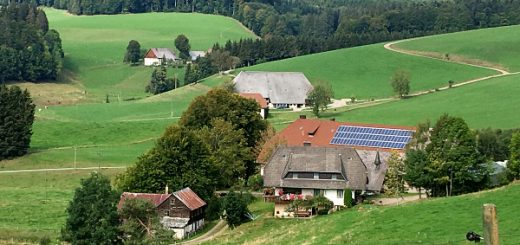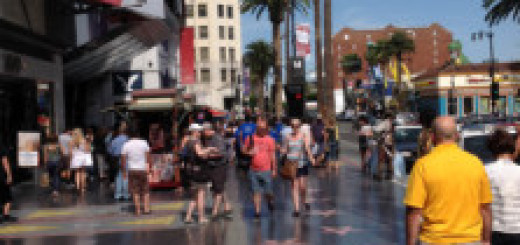Prague – the City of a Hundred Spires

Situated on the Vltava River, this wonderful city has more than its fair share of historic spired buildings. Known locally as Praha, it was founded during the Romanesque period and its building exhibit the various following periods of Gothic, Renaissance and Baroque architecture. Since 1992, the extensive historic centre of Prague has been included in the UNESCO list of World Heritage Sites. The inner city is divided into four main zones, three of which we were fortunate to wander through – Hradčany and Lesser Town (Malá Strana); Old Town (Staré Město) and Jewish Quarter (Josefov); and New Town (Nové Město).

We arrived late in the afternoon, our coach having driven us all the way from Munich, via Nuremberg for a lunch stop. For dinner we were treated to a Czech folk evening at a restaurant just out of the main city, called U Marčanů. We were entertained by singers, dancers and musicians in traditional costumes, as well as a waiter who had a unique way of pouring our wine from a flask that resembled a giant pipette! It was at once spectacular and nerve-wracking to see, especially when he poured our red wine. The musicians also had unusual instruments – the cimbál (dulcimer) which we had seen in Budapest, a huge fujarka (tabor pipe) like we saw in Bratislava and a fluffy goat skin bagpipe called a bock. The dancers also snared several of our travelling companions to teach them the various dances. The entertainment really made our night memorable.
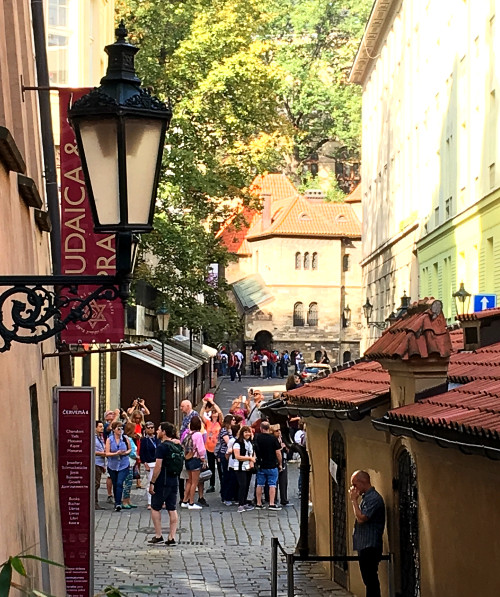
Next morning we met up with a local guide who conducted us firstly through the Jewish Quarter (Josefov). This is a former ghetto which began in the 13th century when Jewish people were ordered to vacate their homes initially from Prague and later from various other parts of Europe and settle in this one area. Many significant historical buildings still remain and form the best preserved complex of historical Jewish monuments in the whole of Europe. The Jewish Museum complex includes five synagogues, a Ceremonial Hall and the Old Jewish Cemetery. The museum houses a collection of artefacts collected by the Nazis from occupied Europe, and ironically, intended to serve as testament to the extinction of the race!
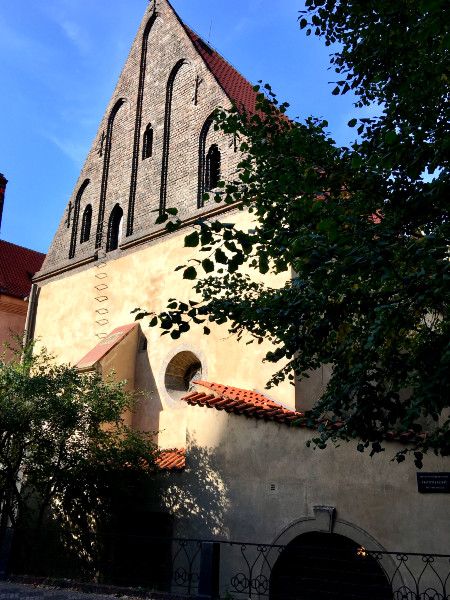
A sixth synagogue, the Old-New (Staronová) Synagogue, is not part of the museum complex, as it is Europe’s oldest active synagogue, having been built in 1270, and is the main synagogue of the Jewish community in Prague.

In the same area we came upon this fabulous Art Nouveau doorway. The variety of architectural styles and building adornments in Prague make this such a beautiful Old Town to wander through.
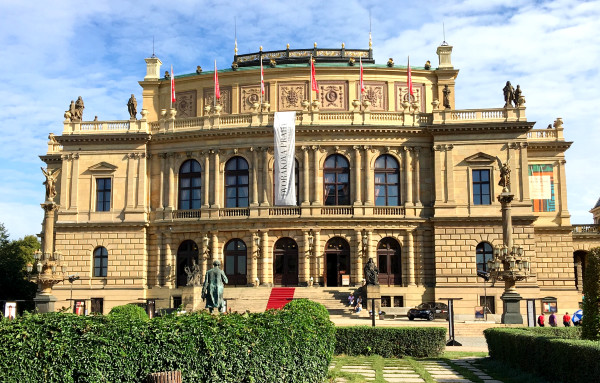
Leaving the Jewish Cemetery area we headed towards the Charles Bridge, passing along the way the Karlova University buildings and on the bank of the Vltava River, the Rudolfinum, the home of the Czech Philharmonic Orchestra. The curved facade of the building displays a neo-Renaissance style yet was opened in 1885. Apart from the inter-war years when it was the seat of parliament, it has primarily been associated with music and the arts.

The Charles Bridge, commenced in 1357 and completed 45 years later, connects Staré Město (old Town) with Malá Strana (Lesser Town) and the Prague Castle on the other side of the river. The imposing Gothic tower on the Old Town side mirrors another on the Lesser Town side. Along the bridge, which has been pedestrian only since 1978, there are about 30 statues representing various saints as well as a crucifixion statue..
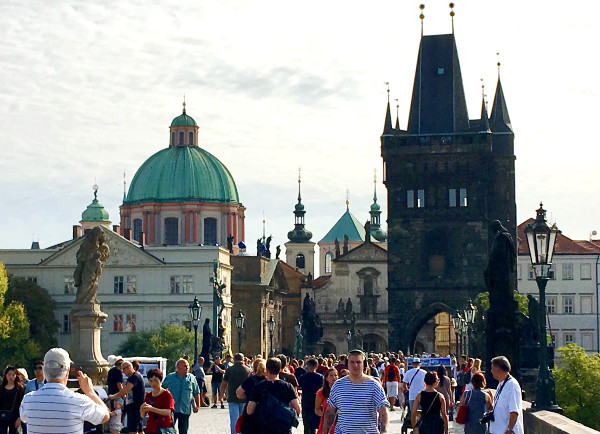
The bridge is one of the chief attractions of Prague. From it you can see wonderful views over the river to the Castle and the Franz Kafka Museum and back into the Old Town, with the churches of St Francis of Assisi and St Savior prominent.

From the bridge we wandered back into the Old Town to see another of the main attractions – The Old Town Square. Looming above the ornate Baroque and Gothic buildings that face onto the square is the Gothic Church of Our Lady before Týn, with the characteristic spires that are recognisable city landmarks. Other notable buildings are the Kinsky Palace, a Rococco building from the mid-18th century which houses art from the National Gallery, the 14th century Gothic Stone Bell House next door with its bell embedded in the wall, the Baroque Hussite church of St Nicholas and the Old Town Hall completed in 1364. This square is also renowned for it Christmas Markets. In the centre is a monument to Jan Hus, a Czech church reformer executed in 1415.
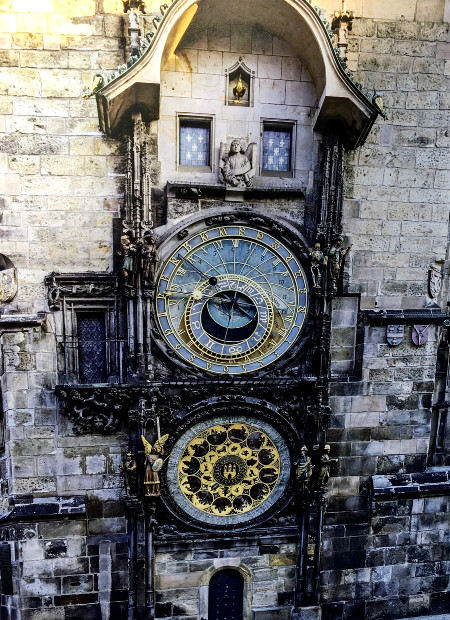
On the southern wall of the town hall is Prague’s famous Astronomical Clock. This medieval clock was first installed in 1410, making it the third-oldest astronomical clock in the world and the oldest clock still operating. The clock display is composed of an astronomical dial showing the current position of the Sun and the Moon as they are seen from Prague, a mechanical clock with four versions of telling time, a calendar dial with zodiac signs, and sculptures representing the four major evils as well as a parade of the 12 apostles on the hour.
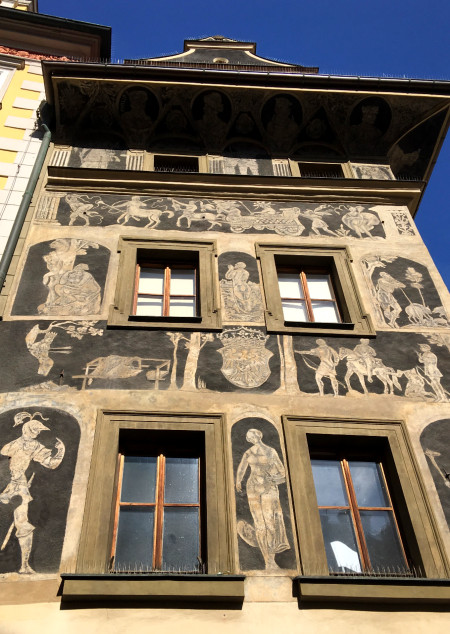
The facades of many buildings in this area have been decorated with frescoes or plaster embellishments in the baroque style. Some are purely ornamental while others seem to tell a story about the original occupiers. The ‘House at the Minute’ with its beautiful sgrafitto facade is located next the Old Town Hall complex. The famous writer Franz Kafka lived in this house with his family at the end of the 19th century.
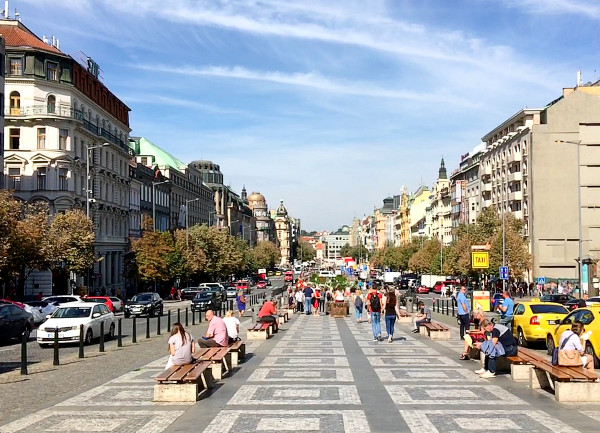
With the official walking tour at an end, we made our way independently to the New Town (Nové Město) via the pedestrian streets jammed with shoppers in the big brand stores and traditional street markets. This brought us out into Wenceslas Square which looks more like a boulevard or a wide two-lane street. This is clearly the commercial centre of town with not only retailers but also hotels, corporate offices, currency exchange booths, restaurants and bars. It also gave us the opportunity to find wifi at McDonalds while we had a coffee.
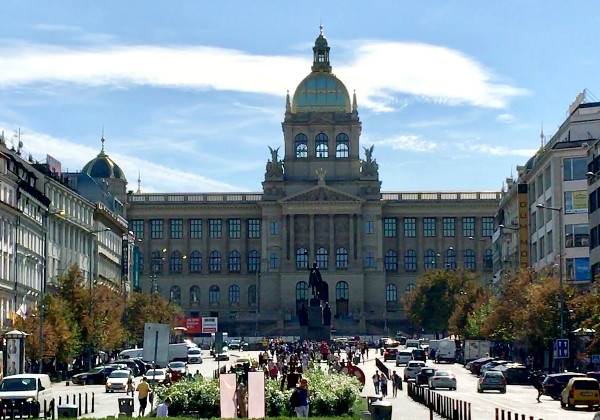
At the southeastern end is the neo-Renaissance building of the National Museum, opened in 1891. The equestrian statue in front of the main entrance depicts St. Wenceslas, the former Duke of Bohemia who was assassinated in 935 and has become patron saint of Czechia (Czech Republic).

At this point Hubby managed to get an Uber to take himself off to a game of golf – as he is wont to do on our holidays – while I took myself back across the Vltava River and up to the Prague Castle precinct which includes the Cathedral of St Vitus, dominating the skyline.

Prague Castle claims to be the largest ancient castle in the world. It dates from the 9th century and the Romanesque Basilica of St George which is within the complex was founded in the 10th, by the reigning Duke and his son Wenceslas.
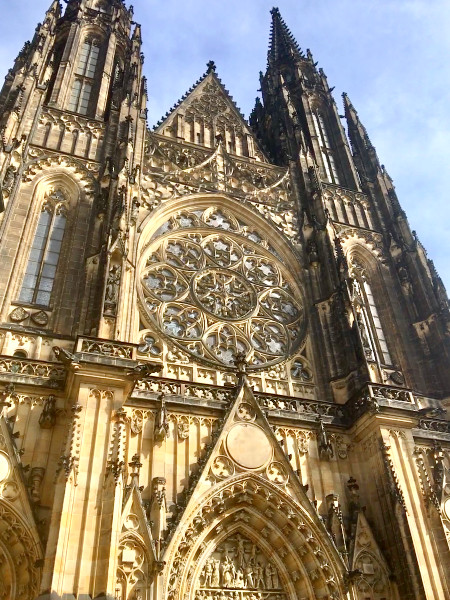
Although there was a church of the same name also established there, it was not until the 14th century that the construction of Gothic St Vitus Cathedral in its current form began.
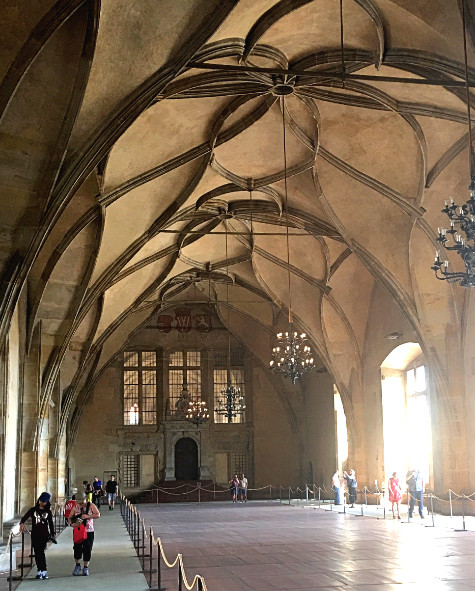
The Castle buildings and fortifications evolved over several hundred years. The magnificent Vladislav Hall was completed in 1502. The hall is still used by the modern Czech state for representative and ceremonial purposes. Nowadays, the president of the Czech Republic resides within the castle, but many sections are still open to the public. The castle is also the place where Czech crown jewels are kept – those on display are reproductions – as well as countless historical and artistic treasures. Another drawcard for tourists is the changing of the guard ceremony at midday.

A tiny street on one side of the castle called Golden Lane houses displays of medieval weapons, household goods and period clothing. It got its name from the goldsmiths who used to live there. It also housed writers such as Franz Kafka in the early 20th century. The colorful small houses give it a unique charm and it is very popular among tourists, as is the macabre torture display as you exit the lane.
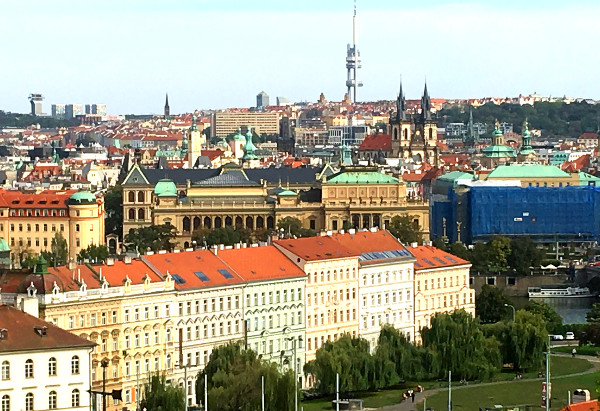
The views from the Castle precinct are wonderful. Looking back towards the Old Town with its many spires, and the New Town beyond that, I was able to capture some last memories of this great city before returning to our accommodation and preparing for the next stop on our tour – Vienna. Having been there only a week before, I was looking forward to catching up on the attractions we missed the first time – there are so many!


